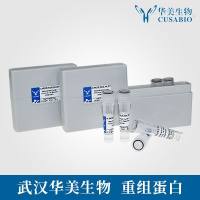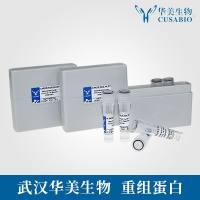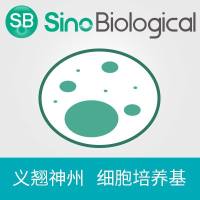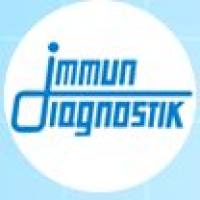Derivatization of Free Natural Glycans for Incorporation onto Glycan Arrays: Derivatizing Glycans on the Microscale for Microarray and Other Applicati
互联网
- Abstract
- Table of Contents
- Materials
- Figures
- Literature Cited
Abstract
Nature possesses an unlimited number and source of biologically relevant natural glycans, many of which are too complicated to synthesize in the laboratory. To capitalize on the naturally occurring plethora of glycans, a method is presented here to fluorescently tag isolated free glycans while maintaining the closed?ring structure. After purification of the labeled glycans, they can be printed on a glass surface to create a natural glycan microarray, suitable for interrogation with potential glycan?binding proteins. The derivatization of these natural glycans has vastly expanded the number of glycans available for functional studies. Curr. Protoc. Chem. Biol. 3:53?63 © 2011 by John Wiley & Sons, Inc.
Keywords: fluorescence; reductive amination; glycan microarray; conjugation
Table of Contents
- Introduction
- Basic Protocol 1: Preparation of Closed‐Ring Glycan‐AEAB from Free Reducing Glycans
- Alternate Protocol 1: Preparation of AEAB Conjugates Using Commercial Chemicals
- Commentary
- Literature Cited
- Figures
Materials
Basic Protocol 1: Preparation of Closed‐Ring Glycan‐AEAB from Free Reducing Glycans
Materials
Alternate Protocol 1: Preparation of AEAB Conjugates Using Commercial Chemicals
Materials
|
Figures
-
Figure 1. The closed‐ring fluorescent conjugation of reducing glycans. View Image -
Figure 2. The preparation of AEAB conjugates or fluorescent neoglycoproteins by the reaction of PNPA derivatives with ethylenediamine or proteins, respectively. View Image -
Figure 3. Comparison of the binding of four different antibodies to open‐ring and closed‐ring AEAB conjugates on a glycan array. The arrays were printed using a piezo printer (Perkin‐Elmer) with open‐ and closed‐ring AEAB derivatives at 300 µM on NHS‐derivatized slides. Antibodies were applied to the glycan array at the concentrations indicated in the figure, and detected with appropriate fluorescently labeled secondary antibodies (Song et al., ). The x axis represents different glycans on the array by number, and the y axis represents the relative fluorescence units (RFU) detected on the microarray. View Image
Videos
Literature Cited
| Literature Cited | |
| Alvarez, R.A. and Blixt, O. 2006. Identification of ligand specificities for glycan‐binding proteins using glycan arrays. Methods Enzymol. 415:292‐310. | |
| Bigge, J.C., Patel, T.P., Bruce, J.A., Goulding, P.N., Charles, S.M., and Parekh, R.B. 1995. Nonselective and efficient fluorescent labeling of glycans using 2‐amino benzamide and anthranilic acid. Anal. Biochem. 230:229‐238. | |
| Blixt, O., Head, S., Mondala, T., Scanlan, C., Huflejt, M.E., Alvarez, R., Bryan, M.C., Fazio, F., Calarese, D., Stevens, J., Razi, N., Stevens, D.J., Skehel, J.J., van Die, I., Burton, D.R., Wilson, I.A., Cummings, R., Bovin, N., Wong, C.H., and Paulson, J.C. 2004. Printed covalent glycan array for ligand profiling of diverse glycan binding proteins. Proc. Natl. Acad. Sci. U.S.A. 101:17033‐17038. | |
| Cummings, R.D. 2009. The repertoire of glycan determinants in the human glycome. Mol. Biosyst. 5:1087‐1104. | |
| de Paz, J.L. and Seeberger, P.H. 2006. Recent advances in carbohydrate microarrays. QSAR Combin. Sci. 25:1027‐1032. | |
| Dubois, M., Gilles, K., Hamilton, J.K., Rebers, P.A., and Smith, F. 1951. A colorimetric method for the determination of sugars. Nature 168:167. | |
| Feizi, T. and Chai, W. 2004. Oligosaccharide microarrays to decipher the glyco code. Nat. Rev. Mol. Cell Biol. 5:582‐588. | |
| Horlacher, T. and Seeberger, P.H. 2008. Carbohydrate arrays as tools for research and diagnostics. Chem. Soc. Rev. 37:1414‐1422. | |
| Luyai, A., Lasanajak, Y., Smith, D.F., Cummings, R.D., and Song, X. 2009. Facile preparation of fluorescent neoglycoproteins using p‐nitrophenyl anthranilate as a heterobifunctional linker. Bioconjug. Chem. 20:1618‐1624. | |
| Manger, I.D., Rademacher, T.W., and Dwek, R.A. 1992. 1‐N‐glycyl beta‐oligosaccharide derivatives as stable intermediates for the formation of glycoconjugate probes. Biochemistry 31:10724‐10732. | |
| Paulson, J.C., Blixt, O., and Collins, B.E. 2006. Sweet spots in functional glycomics. Nat. Chem. Biol. 2:238‐248. | |
| Smith, D.F., Song, X., and Cummings, R.D. 2010. Use of glycan microarrays to explore specificity of glycan‐binding proteins. Methods Enzymol. 480:417‐444. | |
| Song, X., Lasanajak, Y., Rivera‐Marrero, C., Luyai, A., Willard, M., Smith, D.F., and Cummings, R.D. 2009a. Generation of a natural glycan microarray using 9‐fluorenylmethyl chloroformate (FmocCl) as a cleavable fluorescent tag. Anal. Biochem. 395:151‐160. | |
| Song, X., Lasanajak, Y., Xia, B., Smith, D.F., and Cummings, R.D. 2009b. Fluorescent glycosylamides produced by microscale derivatization of free glycans for natural glycan microarrays. ACS Chem. Biol. 4:741‐750. | |
| Song, X., Xia, B., Stowell, S.R., Lasanajak, Y., Smith, D.F., and Cummings, R.D. 2009c. Novel fluorescent glycan microarray strategy reveals ligands for galectins. Chem. Biol. 16:36‐47. | |
| Song, X., Lasanajak, Y., Xia, B., Heimburg‐Molinaro, J., Rhea, J.M., Ju, H., Zhao, C., Molinaro, R.J., Cummings, R.D., and Smith, D.F. 2011. Shotgun glycomics: A microarray strategy for functional glycomics. Nat. Methods 8:85‐90. | |
| Stevens, J., Blixt, O., Paulson, J.C., and Wilson, I.A. 2006. Glycan microarray technologies: Tools to survey host specificity of influenza viruses. Nat. Rev. Microbiol. 4:857‐864. | |
| Stowell, S.R., Arthur, C.M., Dias‐Baruffi, M., Rodrigues, L.C., Gourdine, J.P., Heimburg‐Molinaro, J., Ju, T., Molinaro, R.J., Rivera‐Marrero, C., Xia, B., Smith, D.F., and Cummings, R.D. 2010. Innate immune lectins kill bacteria expressing blood group antigen. Nat. Med. 16:295‐301. | |
| Xia, B., Kawar, Z.S., Ju, T., Alvarez, R.A., Sachdev, G.P., and Cummings, R.D. 2005. Versatile fluorescent derivatization of glycans for glycomic analysis. Nat. Methods 2:845‐850. |









